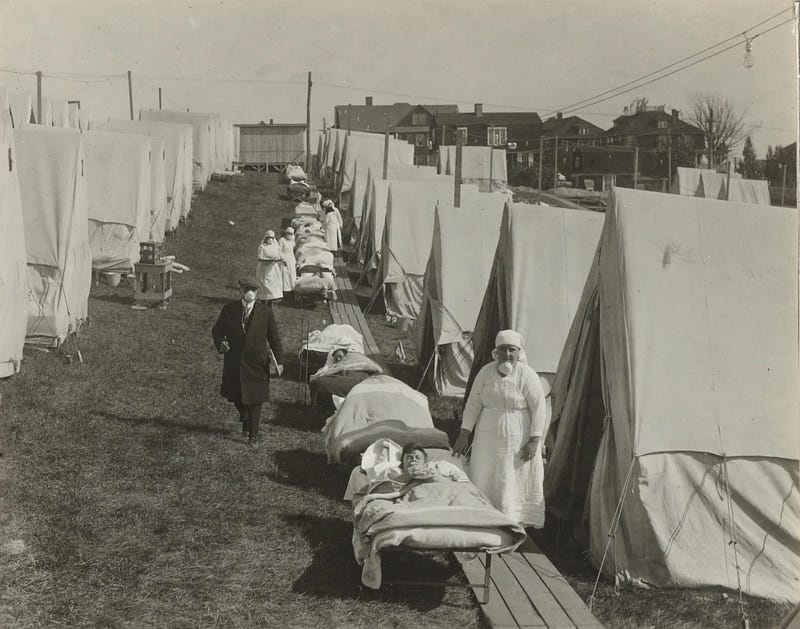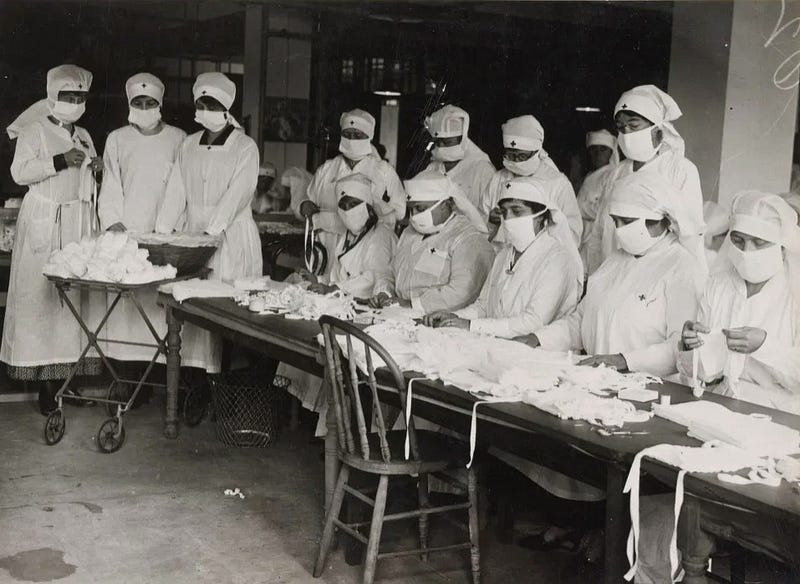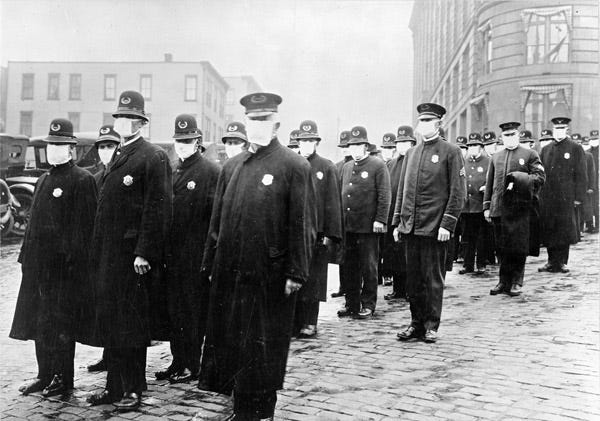Lessons from the 1918 Influenza: Understanding Today’s Pandemic
Written on
Chapter 1: Historical Context of Pandemics
During the 1918-19 influenza pandemic, a temporary medical facility was established in Brookline, Massachusetts.

The 1918 pandemic began on August 27 when two sailors in Boston became the first known cases of Spanish Flu in the U.S. Within a week, around 100 sailors were reported ill daily. By September, Boston experienced a death every nine minutes. The flu rapidly spread nationwide, culminating in the loss of 675,000 American lives and over 50 million globally.
Historical records indicate that Boston officials took measures like closing schools and limiting gatherings to slow the virus's spread. However, these efforts were undermined when crowds gathered to celebrate the end of World War I, leading to a resurgence of flu cases.
Today, with an abundance of scientific knowledge and preparation time, health authorities are contending with a virus that could mirror the Spanish Flu in severity.
Skip Desjardin, the author of "September 1918: War, Plague, and The World Series," emphasizes that the primary challenge in any pandemic lies in the mathematics of transmission rather than scientific understanding.
“The exponential growth of a virus makes it incredibly hard to control,” Desjardin explains. “Each infected person can pass it on to numerous others, and those individuals can do the same.”
Section 1.1: Comparing Mortality Rates
The 1918 influenza virus had a fatality rate of approximately 2%, significantly higher than the seasonal flu's rate of about 0.1%. Current estimates for COVID-19 indicate a death rate that could be at least ten times that of seasonal influenza, according to Dr. Anthony Fauci, director of the National Institute of Allergy and Infectious Diseases. Vulnerable populations, particularly the elderly and those with pre-existing conditions, are at greater risk.
A recent study published in the Journal of the American Medical Association indicated a 7.2% overall death rate among 22,512 confirmed COVID-19 cases in Italy, with rates soaring to 19.7% for those over 70. These numbers must be interpreted cautiously, as not all cases are documented.
The coronavirus responsible for COVID-19 is notably contagious. Research shows that asymptomatic individuals can transmit the virus, and “super spreaders” have been identified in previous outbreaks.
The virus can survive in the environment for extended periods, remaining airborne for up to three hours and on surfaces such as cardboard for a day.
By some estimates, COVID-19 cases could double every six days, potentially resulting in 1 million infections in the U.S. by the end of April.
Reflecting on past health scares, Fauci remarked that COVID-19 presents a unique challenge, vastly different from slower-evolving threats of the past.
“It’s crucial that we tackle this serious issue boldly,” Fauci stated, despite the need to remain calm.
Section 1.2: The Role of Science and Preparedness
As was the case in 1918, we currently lack an effective vaccine for COVID-19. Initial vaccine trials have started, but a widespread solution is likely a year away. Thus, we must rely on personal hygiene, healthcare systems, and decisive actions from leaders.
While potential antiviral treatments are being explored, no definitive solutions have emerged.
Amid the uncertainties of the COVID-19 pandemic, the historical lessons from 1918 underscore the necessity for vigilance and proactive measures.

Chapter 2: Insights from Historical Experts
In a recent dialogue with Desjardin, we explored some critical questions regarding the current outbreak's similarities to the 1918 pandemic.
The first video titled "What lessons can we learn from the 1918 Spanish flu epidemic?" discusses valuable insights from the past that can inform our response to today's health crises.
Desjardin highlighted that in 1918, Dr. Milton Rosenau, the leading infectious disease expert, faced immense challenges in managing the outbreak. Despite his expertise, the virus spread too rapidly for containment.
“By the third week, hospitals were overwhelmed, and medical personnel were in short supply due to World War I,” he noted.
RRB: In light of historical insights, what measures should be taken to mitigate the spread of COVID-19 today?
SD: “One major lesson from the Spanish Flu is the importance of government transparency, regardless of political repercussions. In 1918, the government made misleading claims about the virus’s containment, which only exacerbated the crisis.”

The coronavirus infiltrates the body through the eyes, nose, and mouth, infecting cells to replicate. The CDC recommends avoiding large gatherings and maintaining social distance to prevent transmission.
Only time will reveal the true spread and mortality rates of this virus. Desjardin warns that despite our scientific advancements, we must remain humble before nature’s power.
“A century after the Spanish Flu, we have made remarkable progress, yet we must recognize that tiny pathogens can still pose a significant threat,” he concludes.
The second video titled "Lessons from the 1918 Influenza Epidemic for Today's Pandemic" analyzes how we can utilize historical data to inform our current public health strategies.